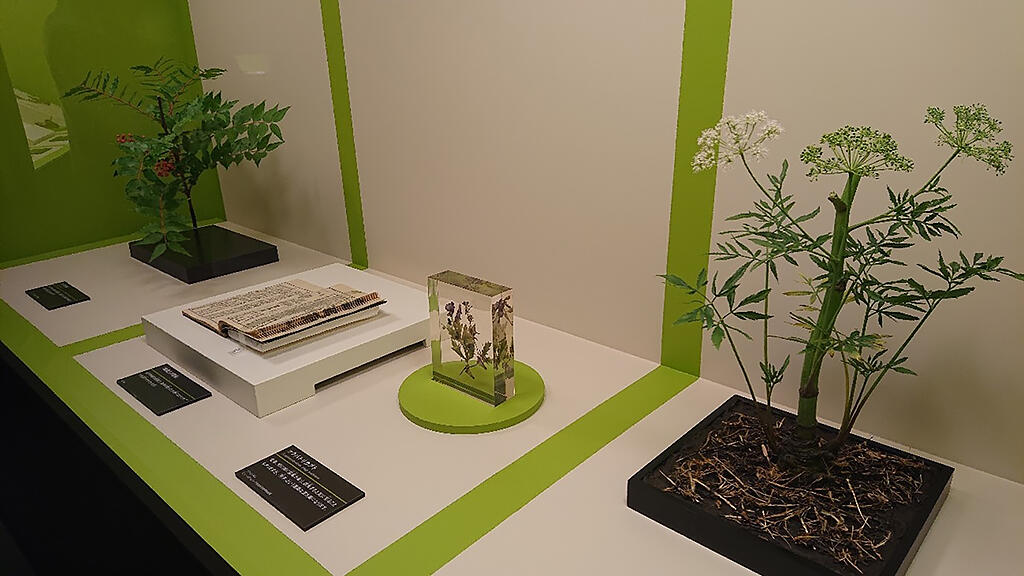The National Museum of Nature and Science (Taito City, Tokyo) is holding Special Exhibition "POISON" until February 19 next year. This poison-themed special exhibition is the first to be held in the National Museum of Nature and Science. The admission fee is 2,000 yen for the general public and university students, and 600 yen for elementary school, junior high school and high school students.
Substances that cause harm to humans and living creatures are known as "poisons," but some of these poisons also have medicinal effects. Among the substances that have an effect on living creatures, those known as "medicines" have positive effects on people, while "poisons" have negative effects. One can think of this as a concept that humans created to understand and make use of the diverse and complex natural world. Sometimes a substance is helpful to the human body but becomes a poison if too much is taken, and, as is seen in allergic reactions, toxicity can differ depending on the degree of sensitivity.
Special Exhibition 'POISON' sees specialists from all sorts of research areas (zoology, botany, earth sciences, anthropology, and science and engineering) delve thoroughly into the poisons that exist all over the natural world, including in animals, plants, fungi, minerals, and artificial poisons, and explain them from the unique perspective of the National Museum of Nature and Science. Around 250 poisons are displayed.
Chapter 1: Welcome to the World of Poisons, uses videos and panels to ask what poison is, and to help visitors understand its concept.
Chapter 2: Poison Museum, introduces a variety of poisonous creatures, and is the most substantial section of this special exhibition.
Visitors are welcomed by large models of creatures scaled up dozens of times. They include a pit viper and an Asian giant hornet, which mainly use poison to attack, and a Monema flavescens (slug moth) larva, which mainly uses poison for defense. Japan's three most poisonous plants are wolfsbane (aconite), Coriaria japonica and dokuzeri (water hemlock). There are a variety of poisonous insects - not just insects such as bees and caterpillars but centipedes, spiders, ticks and scorpions too. Then there are poisonous reptiles and amphibians - for example, Komodo dragons and Bruno's casque-headed frog (Aparasphenodon brunoi). Various poisonous creatures live in the oceans, including Chironex yamaguchii, a type of box jellyfish. At least 30,000 species of poisonous creature are known.

Then, visitors are introduced to a variety of poisonous mushrooms in the poisonous mushroom corner, which notes that "colorful mushrooms are poisonous," "they're edible if they smell nice," "mushrooms that you can tear vertically are edible," and "you can eat worm-eaten mushrooms" are all myths and are not fundamental ways to tell whether a mushroom is poisonous. There are also impressive exhibits of different types of mold, poisons derived from minerals and man-made poisons, among other examples.
Chapter 3: Evolution of Poison, introduces examples of diversity and evolution driven by poison, such as mimicking poisonous animals, stealing poison from poisonous animals, obtaining poison-resistant characteristics and strategies to spread seeds using poison. Its set-up considers the relationship between poison and the evolution of living things.
Chapter 4: Poison and Humans, considers the relationship between poison and humans from ancient times to the present day. Hunting and war, execution and assassination, medicines created from research on poisons... humans have faced poisons and created ways of using them while coming closer to their true character and essence. For example, face powders handed down in the Nara period (710-784) included lead and mercury, causing chronic poisoning, while pyrethrum daisies (Tanacetum cinerariifolium) were used as an effective ingredient in mosquito coils. This section also introduces Japanese research on poisons.
Final Chapter: Dealing with Poison. Climate change, such as global warming caused by human activity and logistics, is one cause of the wider distribution of non-native poisonous creatures. On the other hand, penicillin, discovered from a type of blue mold, is poisonous to bacteria but a great blessing to humanity. This exhibit uses poison to make visitors think about what humans should face now.
Tsuyoshi Hosoya, Director of the Department of Botany, commented, "We want our visitors to understand the diversity and multi-faceted nature of poisons. 'Poison' is not a substance - it's something we think of as an idea or a concept, created to understand the workings of nature and natural management. Science itself is our approach to poison. I'll be happy if we can send the message that dealing with poisons properly is something that we need to do."
This article has been translated by JST with permission from The Science News Ltd.(https://sci-news.co.jp/). Unauthorized reproduction of the article and photographs is prohibited.




